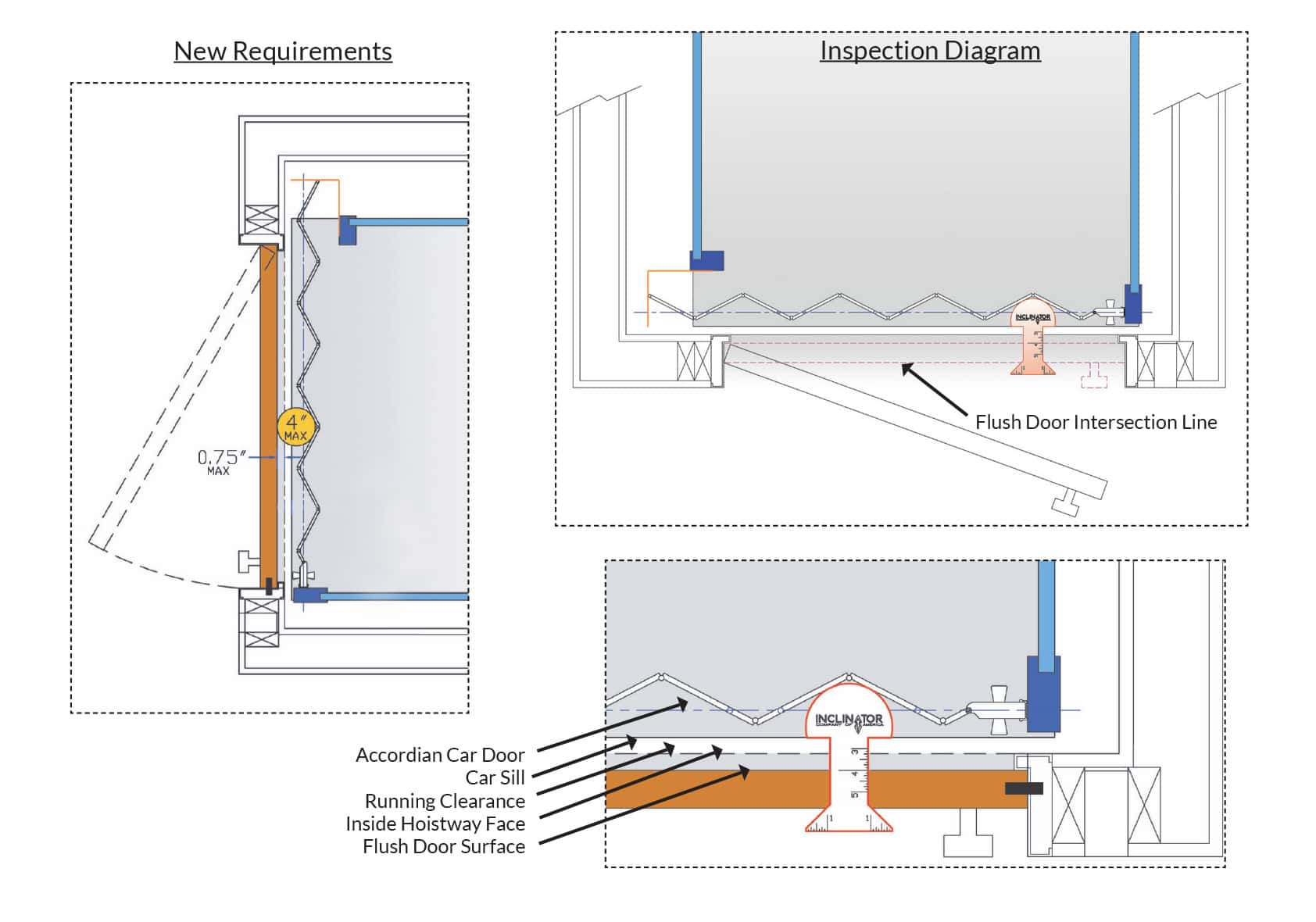Important Elevator Safety Code and Compliance Updates
A set of revisions was made to the safety code for residential elevators - the ASME 17.1/CSA B44 - to prevent entrapment and injury of small children between the hoistway door and the car door.
ASME 17.1/CSA B44 are voluntary national safety standards prepared by dedicated elevator industry professionals with high levels of expertise.

These changes focused on decreasing the space between the hoistway door and elevator car door in three ways:
Limiting the space between the hoistway door and the car door so that folding doors reject a 4" diameter ball at all points along the gate. For sliding doors, this applies to any 4" x 4" area.
Ensuring that any car door can withstand a force of 75 lbs. without warping, or displacing the car door from its guide/tracks, so that small children cannot wedge themselves between the two doors.
Deflection was limited to no more than ¾" to minimize give and decrease the likelihood of accidents.
The reduced clearances were based on a hazard analysis that was conducted and provided to the subcommittee responsible for overseeing the codes for personal-use residential elevators.
This is known as the ASME ANSI A17.1/CSA B44-2016 National Safety Code for Elevators – Section 5.3 Private Residence Elevators
Inclinator has been installing light curtain sensors as a standard feature since 2015 as a short-term measure while the aforementioned ASME 17.1/CSA B44 was being developed and approved.
To further support this safety initiative, Inclinator Company of America is adopting the new code changes to ensure our residential elevators meet only the highest of safety standards on all models as of May 30, 2017.

 + Click to Enlarge
+ Click to Enlarge




